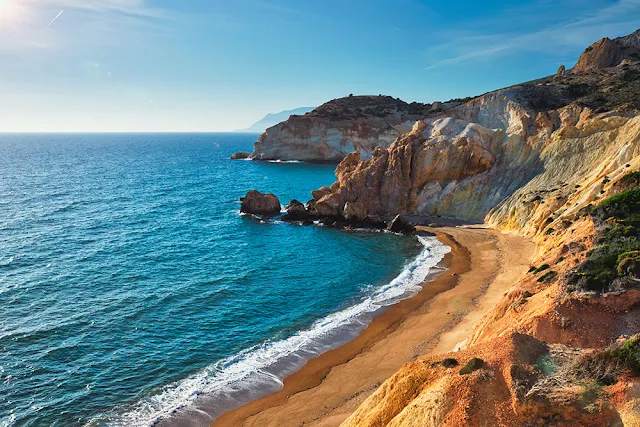Milos, one of the enchanting Cycladic islands in Greece, is a destination that offers a rich tapestry of natural beauty, history, and culture.
However, when planning a trip to Milos, a common question arises: how many days are enough to truly explore and appreciate all that this island has to offer? The answer to this question can vary depending on your travel preferences, but here's a general guide to help you decide how long to stay in Milos.
A Weekend Getaway (2-3 Days):
If you're short on time but eager to experience the essence of Milos, a weekend trip of 2-3 days can provide a delightful taste of the island. During this brief stay, focus on the must-see attractions and the unique character of the island. You'll have enough time to explore some iconic beaches like Sarakiniko, visit Plaka, the charming capital, and indulge in delicious Greek cuisine at local tavernas. A short weekend trip will allow you to capture the highlights of Milos, but you may find yourself wanting more.
A Weeklong Escape (5-7 Days):
For a more in-depth exploration of Milos, a stay of 5-7 days is ideal. This timeframe allows you to not only experience the popular sights but also venture into some of the island's hidden gems. You can dedicate more time to beach-hopping, discovering less-visited coves, and embarking on day trips to neighboring islands. This duration also permits a deeper immersion in the local culture, including exploring archaeological sites and savoring the laid-back lifestyle.
Ten Days or More (10+ Days):
For the ultimate Milos experience, especially if you're a nature enthusiast, history buff, or simply seeking a leisurely vacation, consider staying for ten days or even longer. With this extended visit, you can take your time to fully appreciate the diverse landscapes, go on more extensive island-hopping adventures, and engage in water sports or other activities. You'll also have the opportunity to enjoy the island at a more relaxed pace, allowing for spontaneous exploration and moments of tranquility.
Flexible Travel Itinerary:
One of the beauties of Milos is its versatility. You can tailor your trip to match your interests and the amount of time you have available. If you're a beach lover, you may want to spend more time enjoying the stunning shorelines. History enthusiasts can allocate extra days for archaeological sites and museums, while adventurers might prefer exploring the island's caves and underwater treasures.
In conclusion, the duration of your stay on Milos depends on your individual preferences and the depth of exploration you desire. Whether it's a short weekend getaway or an extended escape, Milos has the flexibility to cater to various travel styles. No matter how many days you choose, one thing is certain: you'll be enchanted by the natural beauty and cultural richness of this captivating Greek island.

Comments
Post a Comment